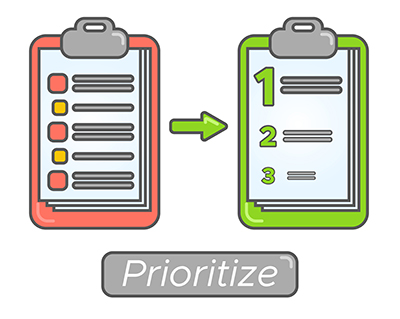Technology can assist your business to enhance its operations and efficiency in today’s competitive environment. Even so, many business owners are still unsure about how software may help them grow their business. Conducting a software needs analysis can help you separate your software needs from your software wants. No business wants to invest in something that won’t improve its performance or provide hefty returns. A software needs assessment for your business can help you understand your firm’s immediate goals and how emerging technology can play a crucial role in expanding your business.
Table of Contents
Different Methods to Evaluate Company’s Needs
Here are several methods for evaluating your company’s needs and, ultimately, distinguishing between software needs and software wants.
Using SWOT Analysis To Answer Critical Questions About Your Business

Conducting a SWOT analysis, which stands for strengths, weaknesses, opportunities, and threats is one approach to get started. This technique of analysis can be difficult to begin because of its versatility. The essential key to writing a solid SWOT analysis is your ability to answer crucial and demanding questions about your business. Some examples of good questions for your SWOT analysis could be:
- What do you have to offer your employees and customers that others don’t?
- What are some areas where your firm could improve?
- What unknown circumstances, such as competition, consumer demand, or economic situations, could make your team’s success more difficult?
- What shortcomings does your team have in comparison to the competition’s team?
If your SWOT analysis reveals that your staff needs additional training or that your company’s website is outdated, you might want to invest in employee training software or modern website optimization tools.
SWOT analysis can be a one-person job but it offers better results when performed as a team activity. The team should be made up of representatives from different departments.
Consider your Company’s and Industry’s Past, Present, and Future

Analyzing your firm’s past, present, and future can provide you with a plethora of data on what your company needs.
Using the Past to Inform the Present
One must always research the history of your industry. This will shed light on a number of essential details.
For example, the first email was sent in 1971, which was nearly 50 years ago. Businesses all across the world now use email as their primary means of internal and external communication: 319.6 billion emails are sent each day in 2021 alone.
Customers have come to expect firms to adopt new technologies, therefore businesses in various industries have adapted to emails over time. Can you envision a company that doesn’t use email? Most certainly not.
Some important questions that arise after an in-depth analysis would be:
- What factors contributed to your company’s past struggles, and how did it overcome them?
- In your industry, what role has technology played?
- What did businesses in your field do to achieve success?
- What issues have had an impact on your company or industry in the past?
Recognize What is Occurring Right Now in the Present
Businesses have encountered a variety of obstacles as a result of the pandemic since 2020.
People expected it would be a temporary measure when many businesses announced work from home at the start of the pandemic in 2020. However, many people now believe that working remotely is here to stay, with many opting to work from home. This paradigm shift will permanently change how businesses operate.
You must study what is going on in your business and industry presently, as well as how current events are affecting it, in order to identify your company’s most immediate needs.
Following an in-depth analysis, some critical questions arise:
- In what areas is your business lacking in terms of performance?
- What are the most important aspects of your company right now?
- What is the primary goal of your company?
- What are the most pressing issues confronting your company right now?
Making use of the Past and Present in order to Plan for the Future
You’ll never have all of the facts, but you don’t need them all to make an informed judgment. If the covid pandemic taught anyone anything, it was that while you can’t foresee the future, you can at least try to be prepared for it.
Catherine Traynor, an architect, saw her business approach fall apart during the pandemic. She used to meet with people face to face to discuss blueprints before the pandemic, but she had to adjust when everything became work from home. She had no idea what the future held for her, but she accepted the remote work from home because she saw the long-term potential.
Following an in-depth analysis, the following essential questions emerge:
- What’s is same today, and what will be different in the future?
- What does the future hold for your company and industry?
- How will your company differentiate itself from its competitors in the future?
Consider the trends that could impact your Industry

There will always be many trends that affect your business presently and ones on the horizon that will impact your business in the near future, and you’ll need to be aware of both if you want to assess your business needs.
You should explore and consider how developing technologies may affect your sector and how you may use them to your advantage. Small businesses, for example, can use AI to improve cybersecurity, boost eCommerce sales, answer customer inquiries via chatbots, and attract talent.
Following an in-depth assessment, the following are some key questions to consider:
- What strategies could you use to take advantage of current trends?
- What current trends are affecting your company and industry?
- What trends do you think will have an impact on your business in the future?
- What current trends might be preventing you from accomplishing your long-term objectives?
Prioritizing the Priorities

The tactics outlined above will offer a list of business needs and areas that could benefit from new software implementation. The next step is to prioritize your company’s requirements. There are a variety of prioritization techniques available, but let’s look at The Action Priority Matrix as an example.
For instance, high-impact, low-effort requirements may be a good place to start and should be given top priority, but low-impact, high-effort requirements may not be key business requirements and should be given low priority. Before integrating new technologies, you should discuss your priorities with key stakeholders and your staff.
Conclusion
By investing in new technology that meets your company’s needs, you can significantly boost your firm and its revenues. If you research and analyze the time now to find the perfect software, you will lessen the odds of having to transfer to a different working system or learning to live with a working system that your team dislikes. If you are looking to read on popular SaaS software, check out this blog!






